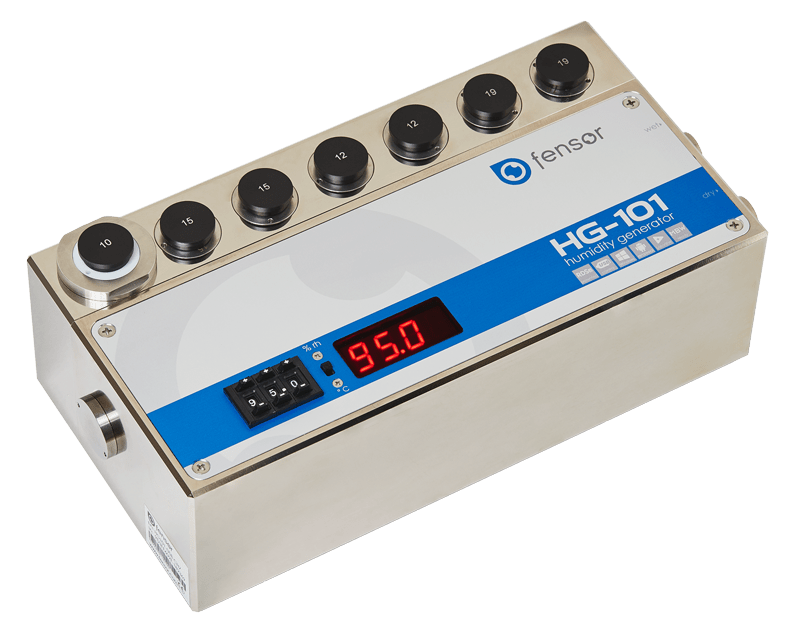Low humidity uncertainty up to 50 °C
Humidity calibration can be performed over a temperature range of 5 to 50 °C by placing the HG101 in a climatic chamber. Set points can be changed remotely through the HG101s USB interface and control software installed on a PC, tablet or smartphone.
The HG-101 is designed to be used within a thermostatically controlled chamber or enclosure, without compromising the homogeneity of the temperature inside the HG101 measuring chamber. To do this, the materials used for the calibrator were selected to promote thermal diffusivity and low hygroscopicity.
To reduce uncertainty and external influences, the structure is configured to minimize cold spots, promote heat distribution and ensure consistency in temperature. As relative humidity is so temperature dependent, this means the temperature related contributions to RH calibration uncertainty are minimised.
Patented RDSa Technology
RDSa rotary dilution system is specifically developed and patented to allow the relative humidity generator HG-101 to control the relative humidity with high speed and high stability.
Indeed, the response time for a ramp from 20 to 80% is performed in 30 seconds.
Reaches the level, the stability of the measurement is better than 0.2% RH.
RDSA performs the dilution in a closed circulation loop, which contributes to the excellent stability obtained but also to ensure low consumption of desiccant silica gel and thus a high degree of autonomy.
Furthermore, the system RDSA not involving pump, its operation is completely silent, a very appreciable peculiarity in the laboratory.
Low Maintenance
The HG-101 calibrator RDSa humidity control system includes desiccant and humidifying cartridges that are easily removed and simple for the user to maintain, even whilst generating humidity. When performance diminishes, the user can replace the desiccant material and apply distilled water to the wetted media in the HG-101 humidifier.
HG-101 generator operates in a closed loop, so it is particularly economical in terms of desiccant and distilled water consumption. Users can recycle the desiccant by regeneration in an oven at 130 °C. Internal cleaning when needed can be easily performed. These factors mean the HG-101 has extremely low operating costs.
USB - Software
Thanks to the USB port and the software for Android and Windows, it is possible to automate calibration, reducing operator time.
With the software’s programmer function, the user has the possibility to create sequences containing up to 10 points, with variable dwell times.
Reference chilled mirror hygrometer
The HG-101 humidity calibrator controls to the user set point with a precisely adjusted RH probe supplied with a traceable calibration certificate according to 17025. However, to achieve the lowest possible uncertainty, Metrologists would use a transfer standard reference for verification of the generated humidity and temperature.
The HG101 has been configured to work with the MBW 473-RP2 dew point mirror. The RP2 dew point measuring head fits directly in to 30mm test cell ports, and the cable mounted Pt100 temperature probe can be positioned according to the user’s preference using specific adapters.
MBW Gecko software is compatible with the HG-101 and 473. It provides data display, graphing and acquisition, as well as the functionality to change set points and run profiles. Gecko also offers the option of taking corrections from calibration certificates into account, which were issued by calibration laboratories accredited according to ISO17025, for example. Gecko is included with the 473.
Data Logging
The data can be automatically saved to a USB stick. If no stick is detected, the data is stored in the internal memory and can later be copied to a USB stick.
Portable / Mobile
With a compact size and robust design, the HG101 is ideal for use on site. Also a rechargeable battery cell allows 48 hours of autonomous operation.
The RDSa flow generation system does not need liquid water, so the HG101 can be used in various positions as required in on-site calibrations.
No special procedures in terms of emptying, drying or cleaning are needed between use or during transportation so the system is ready for immediate use once powered up.

